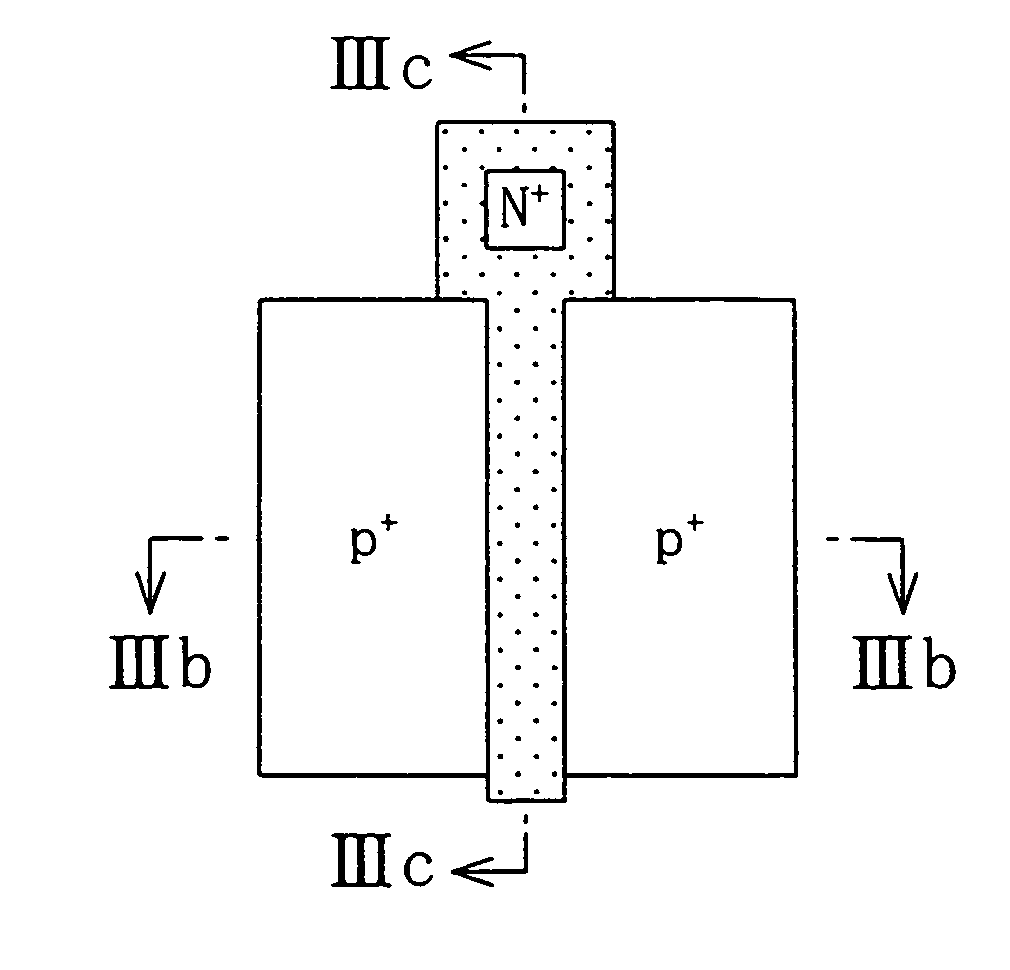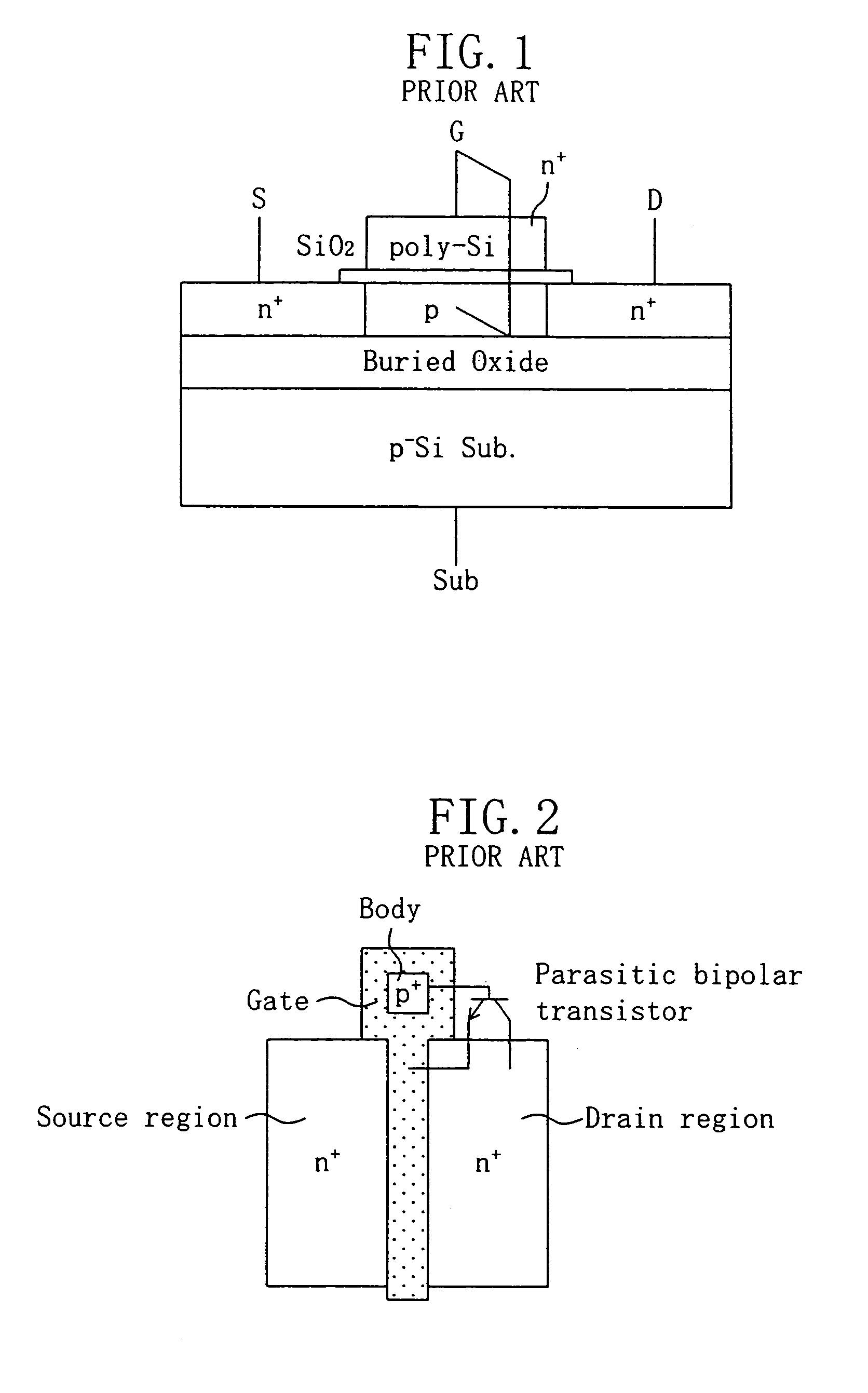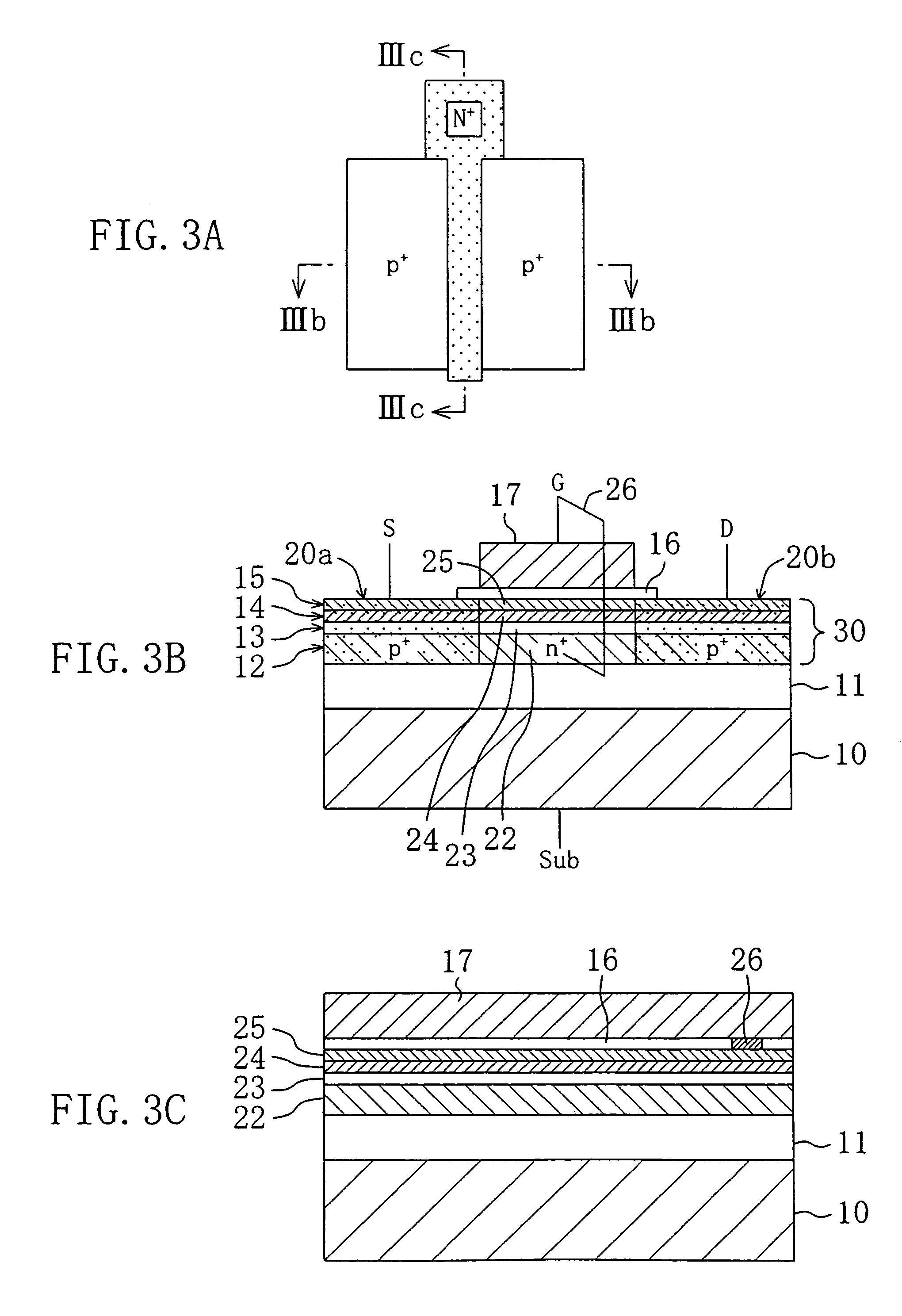Semiconductor device having SiGe channel region
a technology of sige channel and semiconductor, which is applied in the direction of semiconductor devices, electrical devices, transistors, etc., can solve the problems of low threshold voltage, significant increase of body resistance, and the necessity of reducing the threshold voltage, so as to achieve low threshold voltage and wide operation range. , the effect of high speed
- Summary
- Abstract
- Description
- Claims
- Application Information
AI Technical Summary
Benefits of technology
Problems solved by technology
Method used
Image
Examples
first embodiment
[0079]In this embodiment, examples of DTMOS utilizing a Si / SiGe heterojunction using SiGe as a material constituting a channel region.
[0080]FIG. 3A is a plan view schematically showing the structure of a HDTMOS of this Embodiment. FIG. 3B is a cross-sectional view taken along line IIIb—IIIb of FIG. 3A. FIG. 3C is a cross-sectional view taken along line IIIc—IIIc of FIG. 3A. As shown in FIGS. 3A to 3C, the HDTMOS of this embodiment includes a p-type Si substrate 10, a buried oxide film 11 formed on the Si substrate, for example by a method of implanting oxygen ions, and a semiconductor layer 30 provided on the buried oxide film 11. The semiconductor layer 30 includes an upper Si film 12 constituting an upper portion of the SOI substrate, a Si buffer layer 13 epitaxially grown by a UHV-CVD method on the upper Si film 12, a SiGe film 14 epitaxially grown by a UHV-CVD method on the Si buffer layer 13, and a Si film 15 epitaxially grown by a UHV-CVD method on the SiGe film 14. Furthermor...
second embodiment
[0112]In this embodiment, an example of an n-channel HDTMOS using SiGe as a material constituting the channel region will be described.
[0113]FIG. 17A is a plan view schematically showing the structure of a HDTMOS of this embodiment. FIG. 17B is a cross-sectional view taken along line XVIIb—XVIIb of FIG. 17A. FIG. 17C is a cross-sectional view taken along line XVIIc—XVIIc of FIG. 17A. As shown in FIGS. 17A to 17C, the HDTMOS of this embodiment includes a p-type Si substrate 50, a buried oxide film 51 formed by a method, for example, of implanting oxygen ions to the Si substrate, and a semiconductor layer 80 formed on the buried oxide film 51. The semiconductor layer 80 includes an upper Si film 52 constituting the upper portion of the SOI substrate, a Si buffer layer 53 epitaxially grown by a UHV-CVD method on the upper Si film 52, a SiGe film 54 epitaxially grown by a UIIV-CVD method on the Si buffer layer 53, and a Si film 55 epitaxially grown by a UHV-CVD method on the SiGe film 5...
third embodiment
[0119]In this embodiment, an example of a complementary HDTMOS using SiGe as a material constituting the channel region will be described.
[0120]FIG. 22 is a cross-sectional view showing the structure of a complementary HDTMOS of this embodiment. As shown in FIG. 22, the HDTMOS of this embodiment includes a p-type Si substrate 10, a buried oxide film 11 formed by a method, for example, of implanting oxygen ions to the Si substrate, a semiconductor layer 30 for a p-channel type HDTMOS (p-DTMOS) formed on the buried oxide film 11, and a semiconductor layer 80 for an n-channel type HDTMOS (n-DTMOS) formed on the buried oxide film 11. The semiconductor layers 30 and 80 include the films described in the first and second embodiments. The HDTMOS includes gate insulator films 16 and 56 made of a silicon oxide film formed on the semiconductor layers 30 and 80, respectively, gate electrode 17 and 57 formed on the gate insulator films 16 and 56, respectively, and side walls 18 and 58 provided ...
PUM
 Login to View More
Login to View More Abstract
Description
Claims
Application Information
 Login to View More
Login to View More - R&D
- Intellectual Property
- Life Sciences
- Materials
- Tech Scout
- Unparalleled Data Quality
- Higher Quality Content
- 60% Fewer Hallucinations
Browse by: Latest US Patents, China's latest patents, Technical Efficacy Thesaurus, Application Domain, Technology Topic, Popular Technical Reports.
© 2025 PatSnap. All rights reserved.Legal|Privacy policy|Modern Slavery Act Transparency Statement|Sitemap|About US| Contact US: help@patsnap.com



